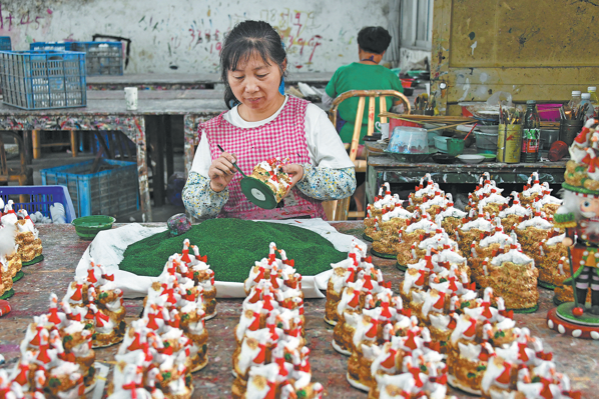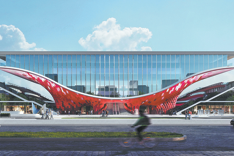What's on

Tragic love

Lianhuanhua, a set of picture books of sequential drawings, was one of the most popular forms of entertainment for Chinese people in the 20th century. The books, often created and drawn by noted artists, illustrate folk tales, ancient poems, classical novels and other cultural themes. An ongoing exhibition at the National Art Museum of China shows 10 ink paintings created by Xiao Yutian in the late 1980s for such a book that narrated the third century ballad Kongque Dongnanfei (Southeast the Peacock Flies). Done in the gongbi style, marked by attention to detail, Xiao vividly visualized the tragic atmosphere and poetic beauty of the tragic love story. The paintings were among 28 works that Xiao donated to the National Art Museum. Xiao once studied under Pan Jiezi, the eminent gongbi artist of modern China. Meanwhile, Xiao reads a lot of classical poems from the Tang (618-907), Song (960-1279) and Yuan (1271-1368) dynasties. The exhibition runs until Dec 12.
9 am-5 pm, closed on Mondays.1 Wusi Dajie, Dongcheng district, Beijing. 010-6400-1476.
Focus on communities

Hope, a photo exhibition now on at the Today Art Museum in Beijing, shows the works by 12 shortlisted artists for the eighth Prix Pictet, the global awards for photography and sustainability. They focus their lens on actions taken by communities around the world in environmental protection, including material recycling and reforestation, by which they address the theme of the prize, "hope", and present examples of how people work hard for it. The exhibition runs until Dec 12. Launched in 2008, the Prix Pictet explores the power of photography in drawing people's attention to sustainability and harmonious development of society. Winner of the eighth Prix Pictet was Joana Choumali from Cote d'Ivoire, whose photographic series Ca valler captures the way people of the Western African country deal with trauma. Hope has toured museums in Shanghai, London, Dublin and Tokyo. The winner of the ninth Prix Pictet, themed on "fire", will be announced on Dec 15 in London.
10 am-6 pm, closed on Mondays.32 Baiziwan Road, Chaoyang district, Beijing. 010-5876-0600.
Digital scroll
During his fourth inspection of southern China, Emperor Qianlong of the Qing Dynasty (1644-1911) was presented with a long scroll painting, Jinling Tu (Picture of Jinling), made in the Song Dynasty (960-1279). It shows vivid details of the booming city as today's Nanjing, Jiangsu province, was known then. Qianlong liked the work so much that he ordered court artists to make replicas of it. One painting by Feng Ning entered the collection of Deji Art Museum in Nanjing in 2015. After years of intensive research on the painting, involving historians and art scholars, the museum has brought the work into the public view in a renewed way. A magnified, digital version of Jinling Tu is on show at An Era in Jinling, through which onlookers can be immersed in the street scenes of Jinling, with the help of more than 500 animated figures from different walks of life depicted in the scroll. It is a journey across time to not only understand aspects of social life but also to get glimpses of the economy and culture of the Song era. The show runs through Oct 28.
2-10 pm, Monday; 10 am-10 pm, Tuesday-Sunday. 18 Zhongshan Lu, Xuanwu district, Nanjing, Jiangsu province. 025-8677-7999.

Today's Top News
- China holds central rural work conference
- President Xi to deliver New Year's message to ring in 2026
- Xi's diplomacy in 2025: Shedding light on a world at crossroads
- China to apply lower import tariff rates to unleash market potential
- China proves to be active and reliable mediator
- Three-party talks help to restore peace






























